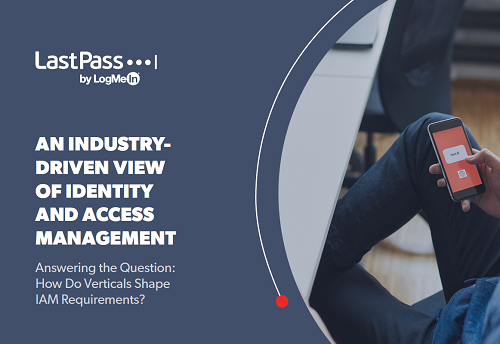REPORTS
An industry-driven view of identity and access management
Identity and access management (IAM) solutions enable organizations to seamlessly and securely connect employees to the work required for their role. IAM technologies work throughout the lifecycle of an employee – from onboarding, to delegating levels of access, managing user authentication during the workday, to offboarding when an employee leaves the organization.
However, every business and industry are unique. Take finance, for example, who are in the business of managing money. How do the finance industry’s IAM priorities differ from an IT organization, who is in the business of selling technology? Both verticals need an IAM strategy to manage their employee identities, however their business models, associated risks and organizational priorities are completely different. All of these factors come together to raise the question: how do vertical requirements shape an organization’s IAM requirements?
We partnered with research firm Vanson Bourne to evaluate how verticals are managing their IAM programs. We surveyed 700 IT and security professionals at organizations ranging from 250 to 2,999 employees, across a variety of industries including finance, IT and media in North America, Europe and Asia-Pacific.
In this eBook, we evaluate the research to see how IAM trends vary by sector, review how those trends impact IAM requirements and offer actionable recommendations for each vertical to optimize their IAM strategy in the coming year.
Key findings from the report include:
Finance is focused on reducing risk, while integrating their IAM infrastructure
Financial service organisations deal with higher stakes than most verticals, which inevitably impacts how they manage employee access and authentication. 35 percent of IT professionals in this industry say hackers have gained access to their organisations in the past, which is not surprising given financial institutions experience the highest cybercrime costs out of all verticals at an average of $18.3 million per year. According to the report, 70 percent of IT professionals in the finance industry say that reducing risk is a top priority and 65 percent state that integrating security infrastructure is their biggest area for improvement.
IT is focused on the security benefits of IAM and prioritises multifactor authentication
As information technology businesses are close to IAM software and managing customer’s data, it’s clear their relationship with technology impacts their IAM strategy. 77 percent in this industry say securing data is their top priority, while improving identity and access management is less of a focus with 61 percent noting that as a priority. 28 percent of IT and security professionals in this industry said they are planning to invest in multifactor authentication (MFA) solutions which will help address their security challenges because MFA helps ensure only the right employees are able to access sensitive data.
Media needs a secure, automated way to manage user access
Mass communication companies work with an array of external consultants to execute their programs, which leads to a wide array of users, both internally and externally, accessing business resources which complicates IAM. 34 percent of IT professionals in this industry say managing user access is important to their organisation, compared to the overall average of all industries (9 percent). 44 percent say end users are demanding an easier to use solution and 49 percent say automating IAM processes is an area for improvement.
SHARE:






